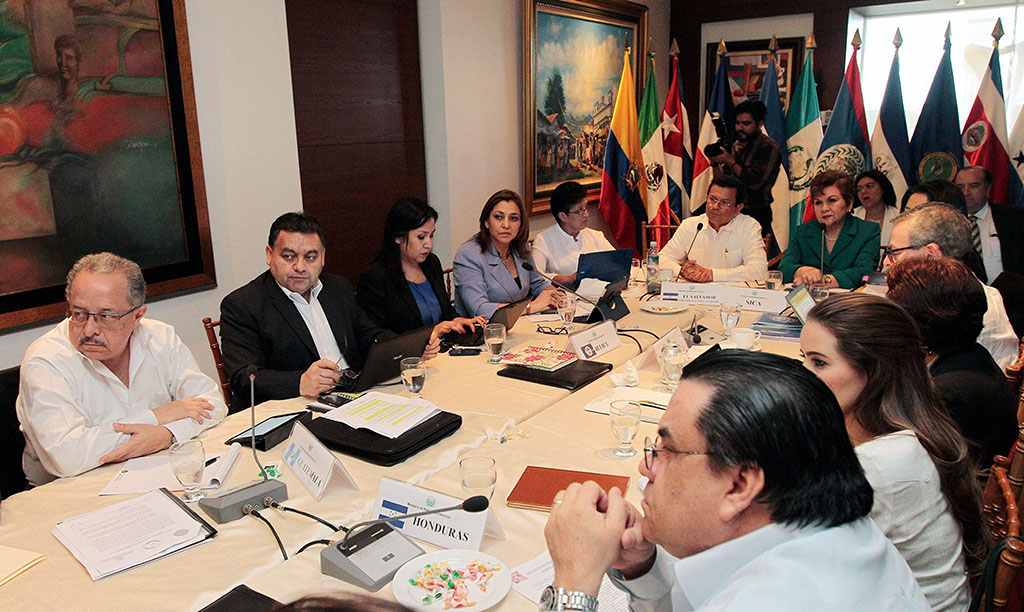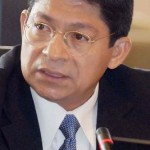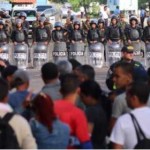
Regional parley fails to settle Nica-Tico impasse over Cubans; U.S. is blamed
No solution was found Tuesday (Nov. 24) to the impasse between Nicaragua and Costa Rica over the thousands of U.S.-bound Cuban migrants who have been marooned for several days on the border between those two countries.
At a special meeting in San Salvador of SICA (Central American Integration System), the Nicaraguan government — through its deputy foreign minister Denis Moncada Colindres — defended its decision to bar transit to the Cuban travelers.
“The government of Nicaragua attends this meeting of [foreign] ministers and representatives of Central American governments and other guest countries with the objective of alerting the international community about the worsening of this crisis, which the Costa Rican government has utilized to legitimize the so-called Adjustment Act and the policy of dry-feet-wet-feet that the United States of North America designed and maintains as part of the blockade against Cuba, denounced and condemned by the whole world,” the Nicaraguan government statement begins.
“The government of Costa Rica has created and manipulated this crisis, which aims to ignore the causes and responsibility of the United States in encouraging an unsafe, undignified, disorderly and illegal migration that affects Cuba and is already affecting the Central American region.”
Attending the meeting were foreign ministers from the SICA member countries — Panama, Costa Rica, Nicaragua, Honduras, Guatemala and El Salvador. Also, diplomatic observers from Mexico, Colombia, Ecuador and Cuba.
Elsewhere in its statement, Nicaragua said that it “will not lend itself to legitimize illegal positions that cause harm, suffering and economic losses to human beings, entire families, the government and people of Cuba, and the region.”
SOVEREIGNTY IS AT ISSUE
“The government of Nicaragua enjoins the government of Costa Rica to take the necessary measures to remove from our border areas all the citizens whose concentration augurs and encourages new violent actions, injurious of [Nicaraguan] sovereignty,” Moncada said.
“The government of Costa Rica has placed those citizens on our borders in a clear case of blackmail, pressure and threat to repeat their invasion and violation of our territory,” he added.
On Sunday (Nov. 22), almost 2,000 Cuban migrants tried to cross into Nicaragua at the Peñas Blancas border checkpoint but were repelled by Nicaraguan police, who used tear gas and rubber bullets. Since then, the number of Cubans at and near the border has risen to almost 3,000.
Mauricio Herdocia Sacasa, a Nicaraguan expert on international law, said that his country “is insisting on the responsibility of other actors, particularly the United States, whose Cuban Adjustment Act and dry-feet-wet-feet policy allows ingress to Cubans with a preferential immigration status, yet does not say how they’re going to carry out that transit.”
U.S. POLICY AT FAULT
Caldera agreed, saying that “the problem is the United States’ inconsistency, because on one hand it allows [Cuban migrants] to have all the benefits of citizenship but on the other hand it blocks their passage,” a reference to the American interdiction of Cuban rafters on the Straits of Florida.
The New York Times on Wednesday quoted Dr. Holly Ackerman, a Duke University specialist in migration flows, as saying that “Washington and Havana would have to negotiate a way to reduce the flow, even with the [dry-feet-wet-feet] policy in place.”
It may be time to repeal the Cuban Adjustment Act, she implied.
In an e-mail this week to the Costa Rican newspaper Tico Times, the U.S. Embassy in San José said that “the Obama administration has no plans to alter current migration policy toward Cuba and Cubans, including the Cuban Adjustment Act.”
[Photo at top of attendees at SICA meeting Tuesday in San Salvador.]





